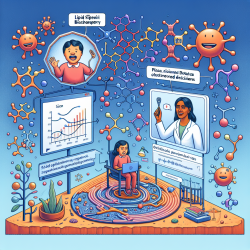Introduction
Families caring for a child with spina bifida face unique challenges and opportunities. The research article "Family functioning guidelines for the care of people with spina bifida" by Kritikos and Holmbeck provides valuable insights into how families can build resilience while navigating the complexities of spina bifida care. This blog explores key findings from the research and offers practical strategies for practitioners to enhance their skills and support families more effectively.
The Resilience-Disruption Model
The resilience-disruption model highlighted in the research underscores the dual nature of family dynamics in the context of spina bifida. While families may experience disruptions such as increased conflict or parental stress, they also have the potential to develop resilience through adaptive behaviors and strong family bonds. Understanding this model is crucial for practitioners aiming to support families in maximizing their resilience and minimizing disruptions.
Key Guidelines for Practitioners
- Promote Effective Parenting Techniques: Encourage parents to adopt adaptive parenting behaviors that facilitate child independence and self-management. This includes promoting autonomy in healthcare responsibilities and supporting the child's developmental milestones.
- Support Family Adaptation: Help families identify resilience and vulnerability factors that impact their adaptation to spina bifida-related stressors. Practitioners can guide families in reinforcing effective coping strategies and enhancing family cohesion.
- Facilitate Family Engagement: Encourage families to participate in social activities and community support networks. Engaging in such activities can reduce feelings of isolation and improve overall family well-being.
- Address Parental Stress: Provide resources and counseling to help parents manage stress and maintain their mental health. Reducing parental stress can lead to better psychosocial outcomes for both parents and children.
Implementing Research Findings
Practitioners can implement the research findings by integrating evidence-based interventions into their practice. This may involve collaborating with multidisciplinary teams to provide comprehensive care and support for families. Additionally, practitioners should consider cultural and socioeconomic factors that may influence family dynamics and tailor interventions accordingly.
Encouraging Further Research
While the guidelines offer a solid foundation, there are still gaps in the research that warrant further investigation. Practitioners are encouraged to engage in ongoing research to develop and evaluate interventions that enhance family resilience and adaptation at various stages of child development. Exploring the cognitive profiles of children with spina bifida and their impact on family dynamics is another area ripe for research.
Conclusion
Empowering families of children with spina bifida requires a holistic approach that addresses both the challenges and opportunities inherent in their journey. By implementing the guidelines and continuing to explore new research avenues, practitioners can play a pivotal role in enhancing the quality of life for these families. For those interested in delving deeper into the research, the original paper offers a comprehensive overview of the guidelines and their development.
To read the original research paper, please follow this link: Family functioning guidelines for the care of people with spina bifida.










